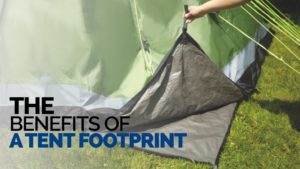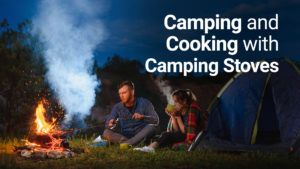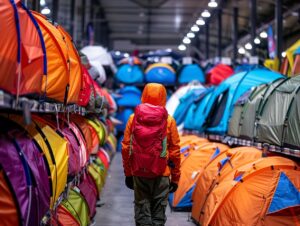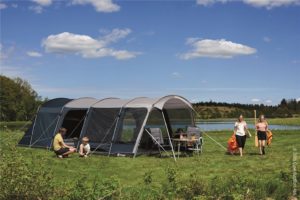
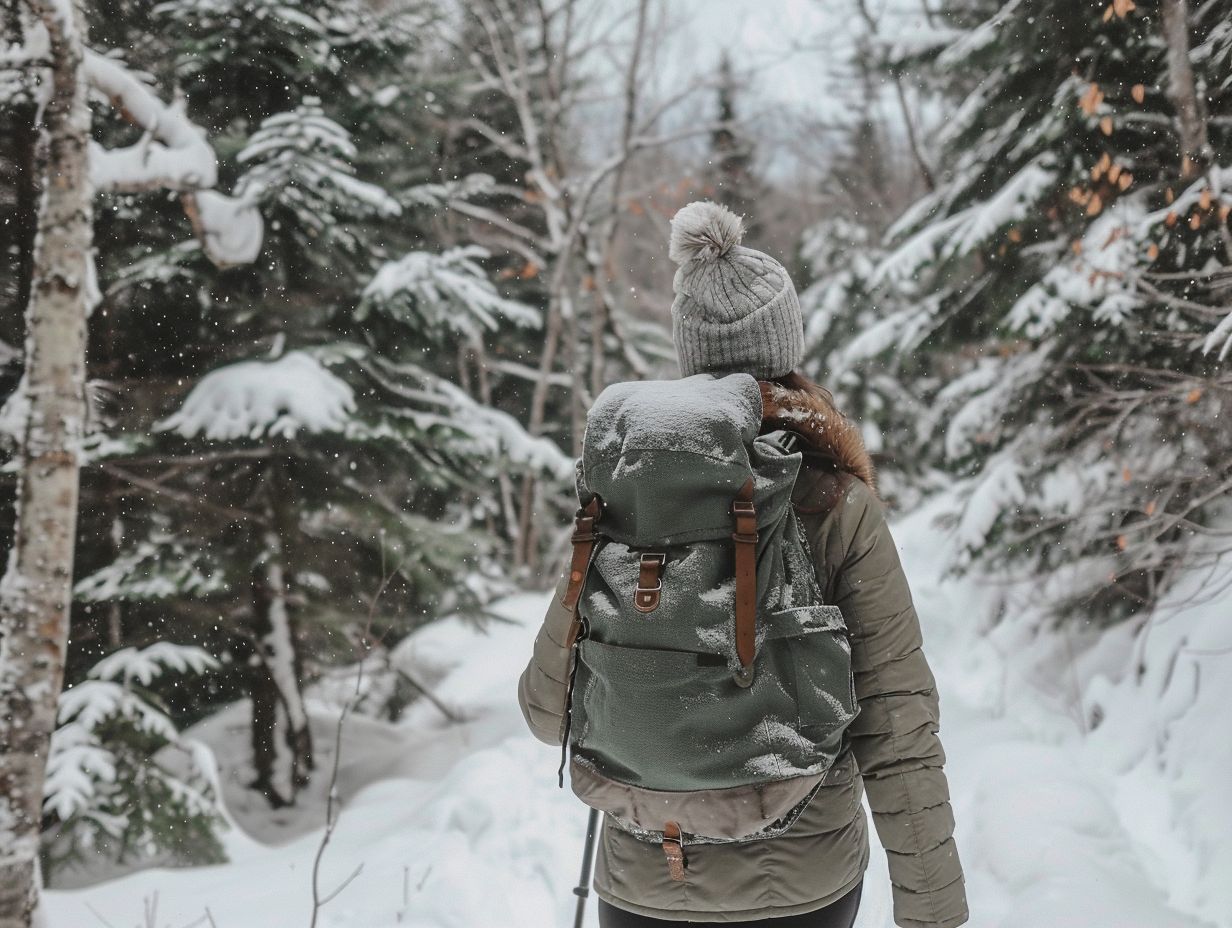
Vaibhav
- Categories: Hiking
As outdoor enthusiasts, we all know the thrill of embarking on a cold weather hike. It is crucial to prioritise staying warm to ensure a safe and enjoyable adventure.
This article discusses the risks of not staying warm during cold weather hikes, essential items to bring, physical preparation tips, and practical advice for staying warm on the trail.
Whether you are a seasoned hiker or a beginner, these tips will help you stay comfortable and safe in the great outdoors.
Key Takeaways:

- Proper preparation is crucial for staying warm during cold weather hikes to avoid serious risks like hypothermia and dehydration.
- Essential items to bring include appropriate clothing, insulation layers, waterproof gear, hand and foot warmers, and an emergency blanket.
- Physical preparation is important as well, including staying active and fit, acclimatizing to the cold, and staying hydrated. Following tips such as layering up, protecting extremities, and staying dry can also help keep you warm during your hike.
What are the Essential Items to Bring for Staying Warm During Cold Weather Hikes?
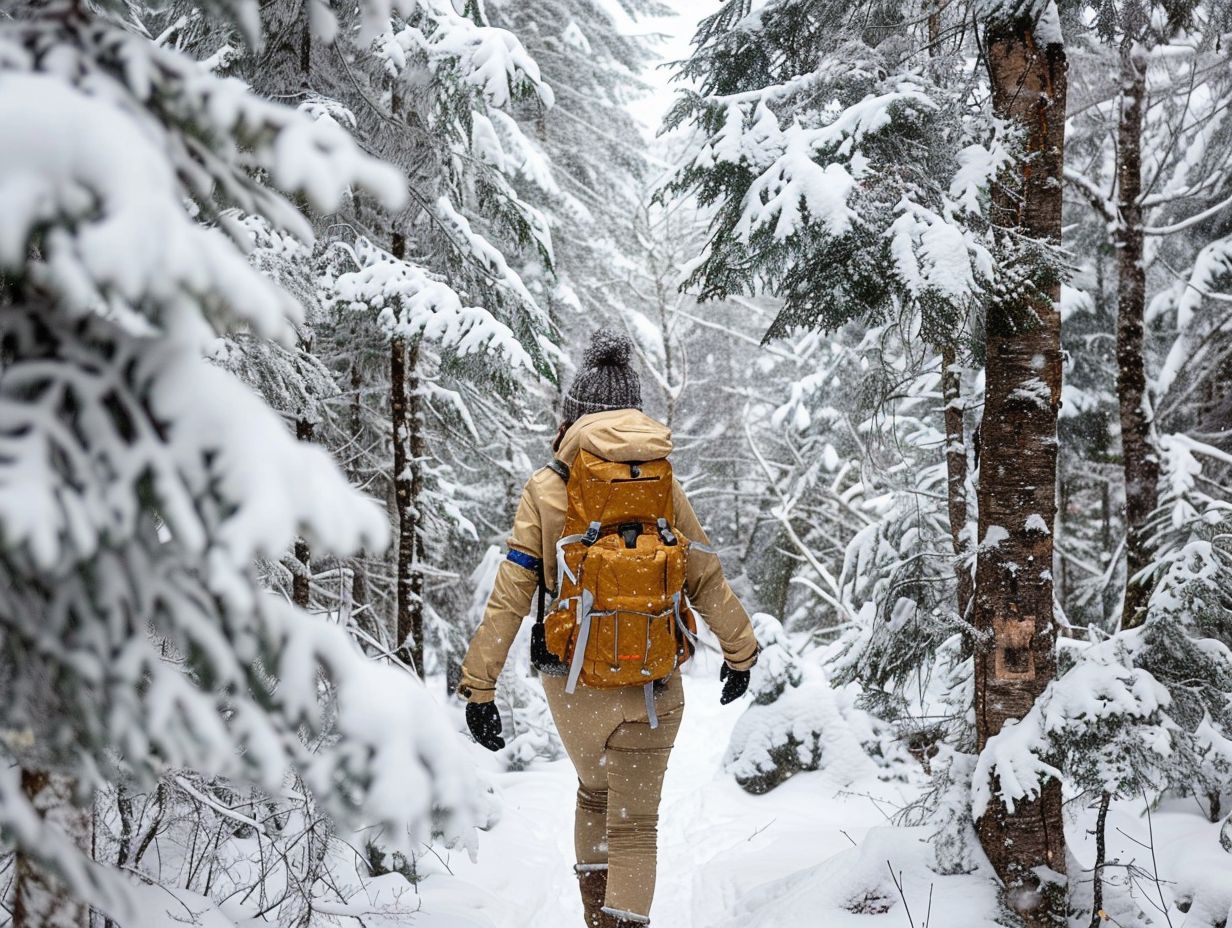
To maintain comfort and safety during hikes in cold weather conditions, it is imperative to be equipped with items that provide efficient insulation and defense against the elements. These items should include suitable base layers, insulating materials such as wool and fleece, waterproof gear, as well as essential accessories like boots, gloves, and wool socks.
1. Appropriate Clothing
Selecting appropriate attire for cold weather hikes is essential, starting with base layers made from materials such as wool or polypropylene. These fabrics offer insulation and ventilation while effectively drawing moisture away from the body.
Sufficient ventilation plays a crucial role in ensuring comfort and preventing overheating during physical exertion. Breathable fabrics like merino wool are highly recommended for their ability to regulate body temperature.
On the other hand, garments made of cotton should be avoided in base layers due to their tendency to retain moisture, leading to wetness and discomfort.
Investing in high-quality base layers not only improves the outdoor experience by keeping the wearer warm and dry but also significantly contributes to their overall safety in cold weather conditions.
2. Insulation Layers
Insulation layers, such as those constructed from fleece, wool, or goose down, play a critical role in retaining heat and providing warmth during cold weather excursions.
Fleece is a widely favoured choice due to its lightweight nature and ability to wick away moisture, rendering it particularly suitable for engaging in physical activities where perspiration is common.
Conversely, wool is renowned for its exceptional insulating properties, even in damp conditions, making it a dependable selection for environments with unpredictable weather patterns.
On the other hand, goose down is esteemed for its unparalleled warmth-to-weight ratio, making it an optimal choice for individuals seeking maximum insulation without unnecessary bulk.
By strategically layering these materials, a synergistic effect can be achieved, enhancing the unique advantages of each, thereby ensuring that the wearer remains comfortably warm irrespective of the prevailing outdoor temperatures.
3. Waterproof Gear
It is imperative to utilise waterproof equipment, such as a shell layer constructed from materials like GoreTex, when engaging in cold-weather hikes to shield oneself from rain, snow, and other forms of moisture.
This specialised gear not only serves to keep individuals dry but also aids in regulating body temperature and preventing hypothermia. GoreTex, a prevalent waterproof fabric, is recognised for its exceptional breathability while still maintaining waterproof properties.
In the selection of waterproof layers, it is advisable to consider characteristics such as durability, weight, and packability. Seek out features like sealed seams, adjustable hoods, and ventilation options to optimise comfort. The acquisition of high-quality waterproof equipment can significantly enhance the outdoor experience irrespective of prevailing weather conditions.
4. Hand and Foot Warmers
Hand and foot warmers are critical accessories that play a pivotal role in maintaining warmth in extremities, thereby reducing the risk of conditions like frostbite and enhancing overall comfort levels during hiking expeditions.
There is a range of hand and foot warmers on the market, each offering unique benefits. Air-activated warmers function by initiating a chemical reaction upon exposure to air, promptly generating heat for immediate relief.
Battery-operated warmers afford convenience by enabling users to adjust heat levels easily. On the other hand, reusable warmers, such as gel packs or electric variants, are eco-friendly options that can be recharged and utilised multiple times.
For optimal performance, it is essential to activate the warmers before commencing the hike and position them within gloves or shoes to ensure optimal heat dispersion.
5. Emergency Blanket
An emergency blanket is a portable and lightweight tool specifically designed to provide thermal insulation and conserve body heat, particularly in the event of unforeseen cold weather conditions encountered during a hiking expedition.
The utility of an emergency blanket transcends the realm of hiking, proving invaluable in a diverse range of scenarios. Emergency responders, outdoor enthusiasts, and survivalists commonly rely on these adaptable blankets to avert hypothermia and shield against adverse weather conditions.
Available in various materials such as Mylar, wool, and polyester, each variant offers distinct benefits tailored to specific circumstances.
Whether engaging in camping activities, skiing adventures, or managing roadside emergencies, the inclusion of an emergency blanket in one’s gear can substantially enhance the prospects of maintaining warmth and safety amidst unexpected occurrences.
How to Prepare Physically for Cold Weather Hikes?
The preparation for hiking in cold weather involves maintaining physical fitness, acclimatizing to low temperatures, and ensuring adequate hydration before and during the hike.
1. Stay Active and Fit

Sustaining an active lifestyle and maintaining physical fitness are imperative for cultivating the endurance and strength necessary for cold weather hiking. Engaging in consistent cardiovascular exercises, such as running, cycling, or swimming, can notably enhance stamina and lung capacity. This enhancement facilitates the management of extensive and demanding hikes in cold climates.
Additionally, strength training activities like weightlifting or bodyweight exercises play a crucial role in fostering the muscle power essential for traversing challenging terrains and carrying heavy equipment.
By incorporating practices such as yoga or Pilates into one’s regime, individuals can improve flexibility and balance, thereby reducing the likelihood of sustaining injuries while traversing rocky or slippery trails during winter hiking excursions.
2. Acclimatise to the Cold
The process of acclimatizing to cold temperatures involves systematically exposing the body to lower temperatures to facilitate adaptation and readiness for the environmental conditions anticipated during a hiking expedition. Cold acclimatization plays a crucial role in enhancing cold tolerance levels, thereby enhancing the enjoyment of outdoor pursuits.
By subjecting oneself to cooler temperatures in a controlled manner, individuals can train their bodies to better conserve heat and mitigate the risk of hypothermia.
Commencing the acclimatization process involves spending brief periods of time outdoors in chilly weather, progressively prolonging the duration as the body acclimatizes to the cold. Layering clothing appropriately is essential to maintain warmth while allowing perspiration to evaporate, ensuring dryness and comfort throughout cold-weather excursions.
3. Stay Hydrated
It is crucial to maintain adequate hydration levels during cold weather hikes, as the body continues to lose water through respiration and perspiration even in low temperatures. Utilising tools such as hydration bladders can be beneficial in ensuring a consistent fluid intake.
Dehydration can manifest rapidly, particularly in cold and arid conditions, resulting in symptoms like dry mouth, fatigue, and dizziness. By regularly consuming water from a hydration bladder, one can mitigate the onset of dehydration symptoms and sustain optimal energy levels.
Incorporating electrolyte tablets into the water can aid in replenishing essential salts that are depleted through perspiration in cold climates. It is important to recognise that maintaining hydration in winter is equally imperative as it is in summer to uphold overall well-being and enhance performance.
What are the Tips for Staying Warm During Cold Weather Hikes?
To maintain sufficient warmth during hikes in cold weather, it is essential to follow basic guidelines. These include:
- Properly layering garments
- Protecting extremities from exposure
- Ensuring dryness
- Participating in continuous physical activity
- Using natural sources of warmth
- Consuming warm foods and drinks
1. Layer Up
A well-structured layering system plays a vital role in maintaining warmth and comfort during outdoor activities. The recommended approach involves starting with baselayers for effective moisture management, adding insulation layers for thermal insulation, and concluding with a shell layer to shield against wind and moisture, making necessary adjustments to layers as circumstances dictate.
Baselayers are specifically engineered to draw moisture away from the skin, ensuring dryness and comfort while engaging in physical pursuits. Materials such as Merino wool and synthetic fibres like polyester are commonly favoured for baselayers due to their exceptional moisture-wicking capabilities.
In terms of selecting insulation layers, the choice of materials is paramount. Down and synthetic insulation are preferred options, with down offering lightweight and compressible properties and synthetic insulation retaining heat even when damp.
The shell layer assumes a critical role as a protective barrier against adverse weather conditions. Materials like Gore-Tex are renowned for their breathable waterproofing attributes. It is imperative to adapt your layering system based on the intensity of your activities and prevailing weather conditions to guarantee comfort and safety during outdoor expeditions.
2. Protect Your Extremities
It is crucial to prioritise the protection of extremities during hikes by utilising essential items such as gloves, wool socks, and insulated boots. This not only helps in preventing cold-related injuries but also ensures overall comfort throughout the outdoor activity.
Furthermore, an effective approach to safeguarding oneself from the elements outdoors is to invest in high-quality gear, such as Buffs. This versatile headwear can also serve as neck gaiters or face masks, providing additional protection from harsh weather conditions.
To maintain warmth and comfort, it is advisable to wear insulated gloves or mittens with liners to enhance the level of insulation for your hands. Additionally, for optimal foot protection, the use of toe warmers or heated insoles in boots is recommended to promote circulation and prevent frostbite, especially in freezing temperatures.
3. Stay Dry
Maintaining dryness is essential to sustaining warmth in adverse weather conditions. Utilising waterproof gear constructed from materials like GoreTex proves instrumental in shielding against moisture resulting from rain and snow.
Moisture, whether derived from precipitation or perspiration, possesses the propensity to significantly influence one’s body temperature, causing discomfort and elevating the susceptibility to hypothermia.
Waterproof fabrics, exemplified by GoreTex, assume a crucial function in repelling moisture ingress while facilitating the evaporation of sweat, thereby ensuring dryness and regulating the body’s temperature.
When embarking on outdoor excursions, it is imperative to adopt a strategic approach to clothing layering. This strategy entails selecting moisture-wicking base layers, breathable waterproof outerwear comprising jacket and trousers, and waterproof footwear to guarantee dryness and comfort throughout the journey.
Additionally, carrying additional pairs of dry socks and gloves proves invaluable in instances of unforeseen wet conditions.
4. Keep Moving
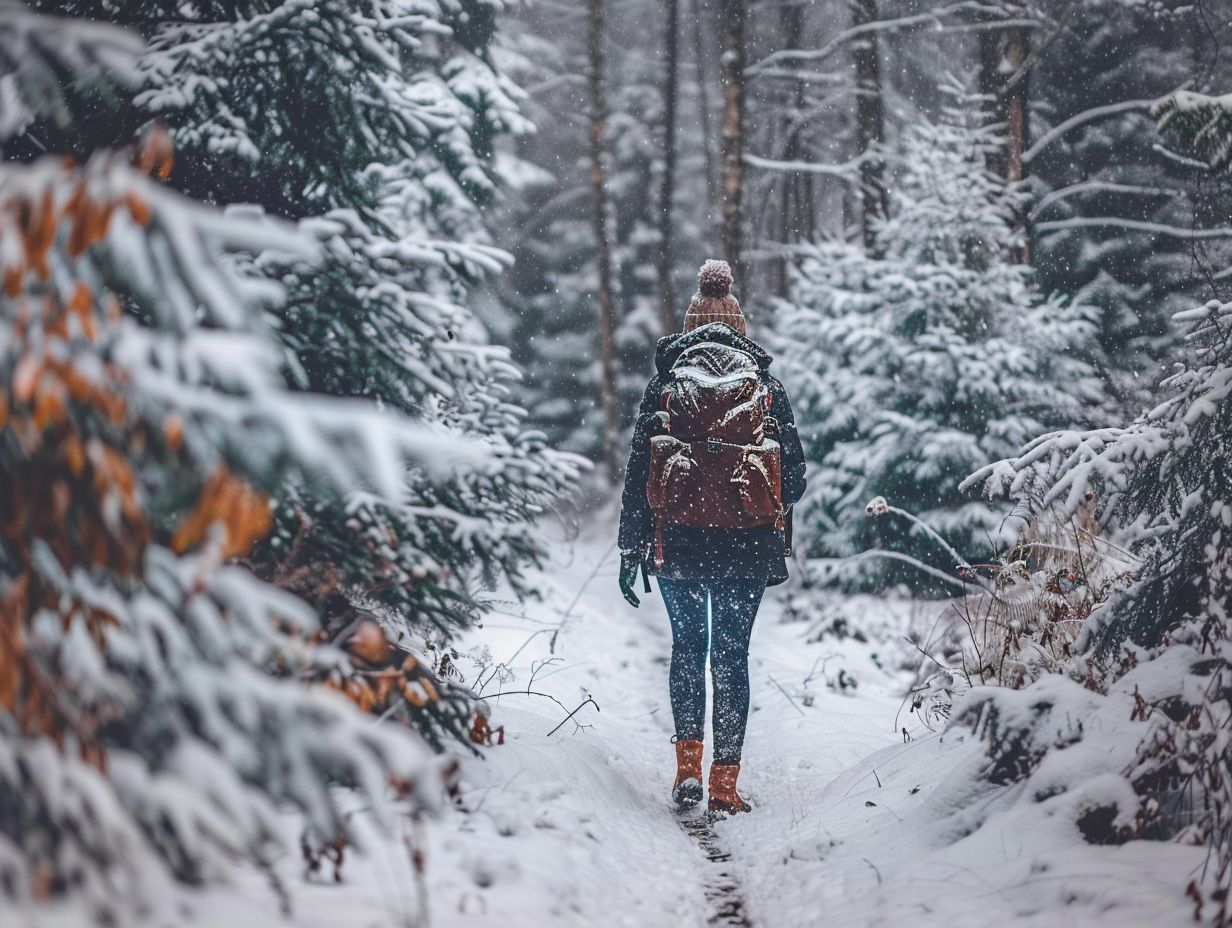
Continuously moving whilst hiking is crucial to maintaining core temperature and circulation, ensuring the body produces sufficient warmth to counteract cold temperatures. Beyond the thermal benefits, engaging in physical activity during hiking yields a multitude of advantages.
Movement contributes to an uplifted mood and enhanced mental clarity through the release of endorphins, commonly referred to as the ‘feel-good’ hormones. Furthermore, physical activity can bolster cardiovascular well-being and muscle strength.
To optimise the hiking experience, it is advisable to incorporate activities such as brisk walking, jumping jacks, or occasional light jogging. Striking a balance between movement and rest is essential to facilitate body recovery and deter fatigue. It is imperative to heed the body’s cues and adjust the pace accordingly for an enjoyable and invigorating hike.
5. Use Natural Heat Sources
Utilising natural heat sources such as the sun, a campfire, or sharing body heat with a hiking partner can significantly enhance the ability to maintain warmth during cold weather hikes.
Implementing strategies like layering clothing to create insulation, selecting suitable materials for insulation, and ensuring adequate hydration to sustain internal warmth are crucial components in combating low temperatures.
Additionally, seeking shelter from wind exposure and leveraging reflective surfaces to absorb and preserve heat are effective methods for maximising the advantages of natural heat sources.
By adopting these techniques, individuals engaging in outdoor activities can optimise their comfort and safety when embarking on cold weather expeditions.
6. Eat and Drink Warm Foods
Consuming warm foods and hot beverages is essential for maintaining core body temperature and sustaining energy levels while engaging in cold weather hiking. Warm foods and hot drinks are vital components in ensuring proper nourishment and warmth during outdoor activities in cold climates.
Including items such as hearty soups, herbal teas, porridge, and roasted vegetables in your diet can enhance internal heat generation and contribute to overall comfort. Additionally, these food choices aid in digestion, facilitating the maintenance of body temperature.
Hot beverages like mulled cider, hot chocolate, and ginger tea offer not only a sense of comfort but also assist in replenishing fluids lost through perspiration.
Frequently Asked Questions
Do I really need to wear a hat during a cold weather hike?
Yes, wearing a hat is crucial for staying warm during a cold weather hike. You lose a lot of heat through your head, so wearing a thermal or wool hat can help retain that heat.
How can I keep my hands and feet warm during a cold weather hike?
Invest in quality gloves and socks made from moisture-wicking and insulating materials. You can also use hand and foot warmers for extra warmth.
Should I bring extra layers with me on a cold weather hike?
Yes, it’s always a good idea to bring extra layers with you on a cold weather hike. Weather can change quickly, and having an extra layer to put on can make a big difference in staying warm.
Are there any specific snacks or drinks I should bring to stay warm during a cold weather hike?
Pack high-energy and calorie-dense snacks like nuts, dried fruits, and energy bars. Warm drinks like hot chocolate or tea can also help keep you warm from the inside out.
Share:
By submitting your email address, you are agreeing to receive marketing emails from theexpertcamper.co.uk.
We’ll never share your email address and you can unsubscribe at any time. Privacy policy
Related Posts

A Seasonal Guide To Hiking In The Peak District
Are you ready to lace up your hiking boots and explore the stunning landscapes of the Peak District? This seasonal guide will take you through

Hiking Challenges Preparing For Your First Ultrahike
Are you ready to take your hiking adventures to the next level? Ultra-hiking offers a unique combination of physical and mental challenges, breathtaking scenery, and
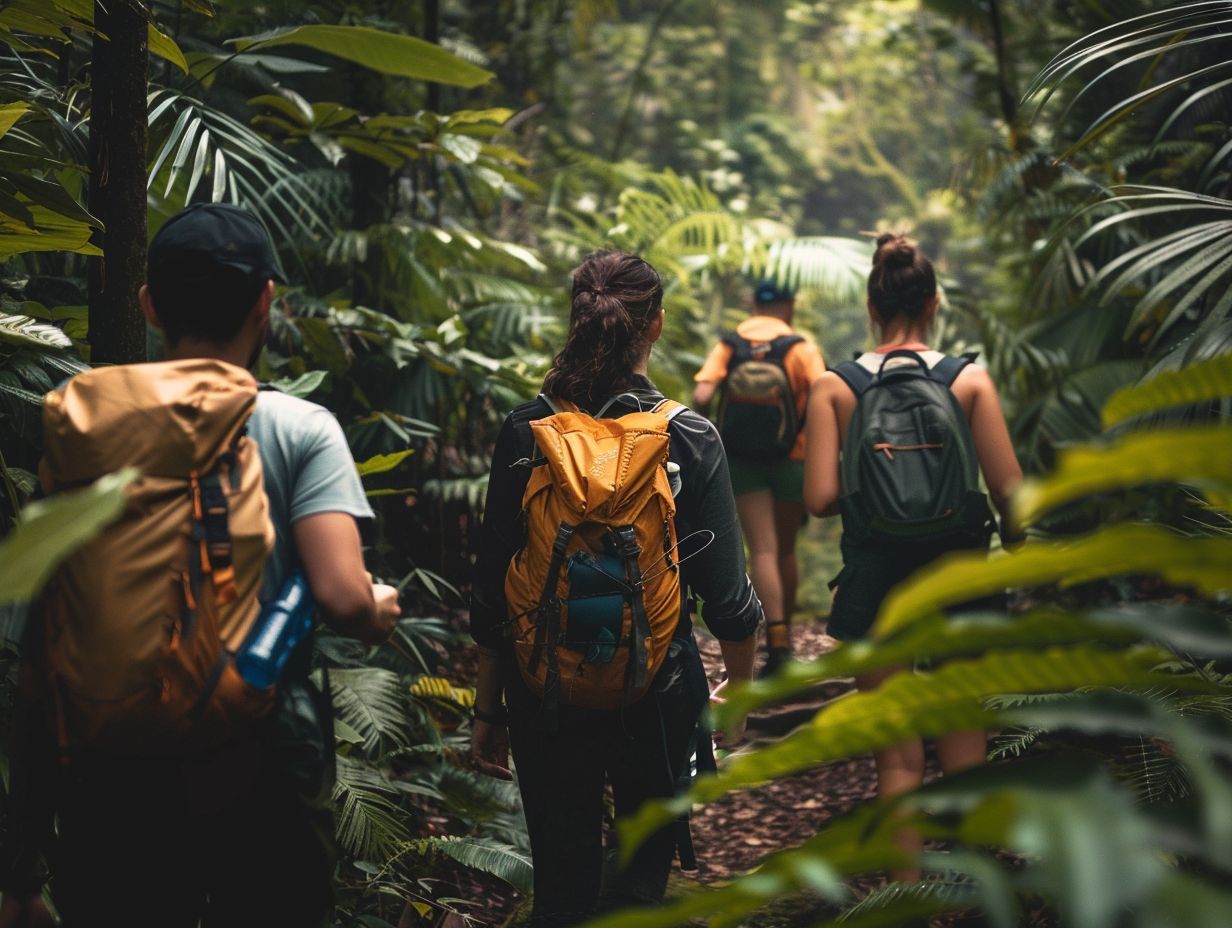
Ecofriendly Hiking Tips For Sustainable Adventures
Are you an outdoor enthusiast looking to minimise your impact on the environment while enjoying the great outdoors? Eco-friendly hiking is the perfect solution! We
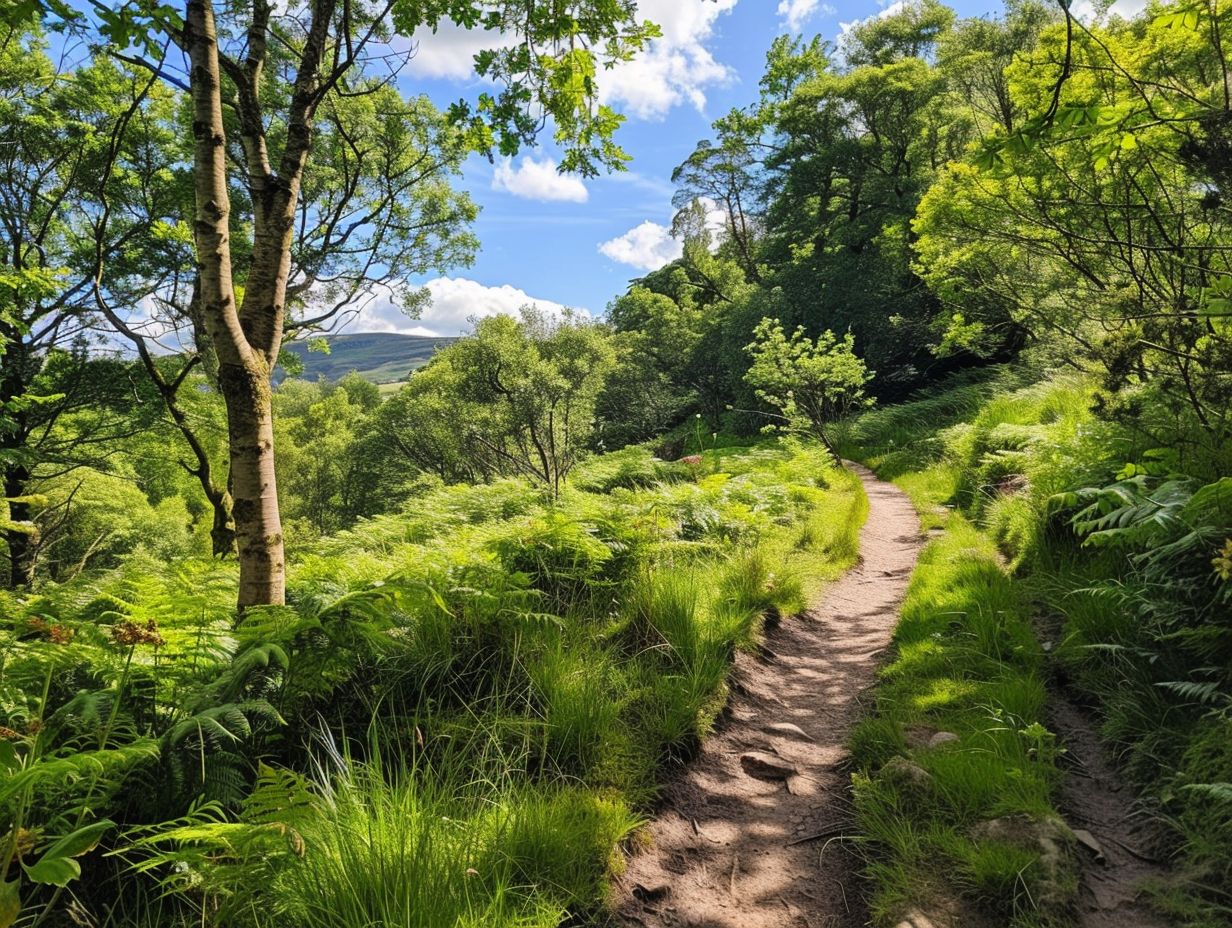
The Best Hiking Trails For Experiencing UK Wildlife
When exploring the picturesque hiking trails of the UK, you can expect to encounter a diverse array of wildlife. From majestic birds soaring overhead to
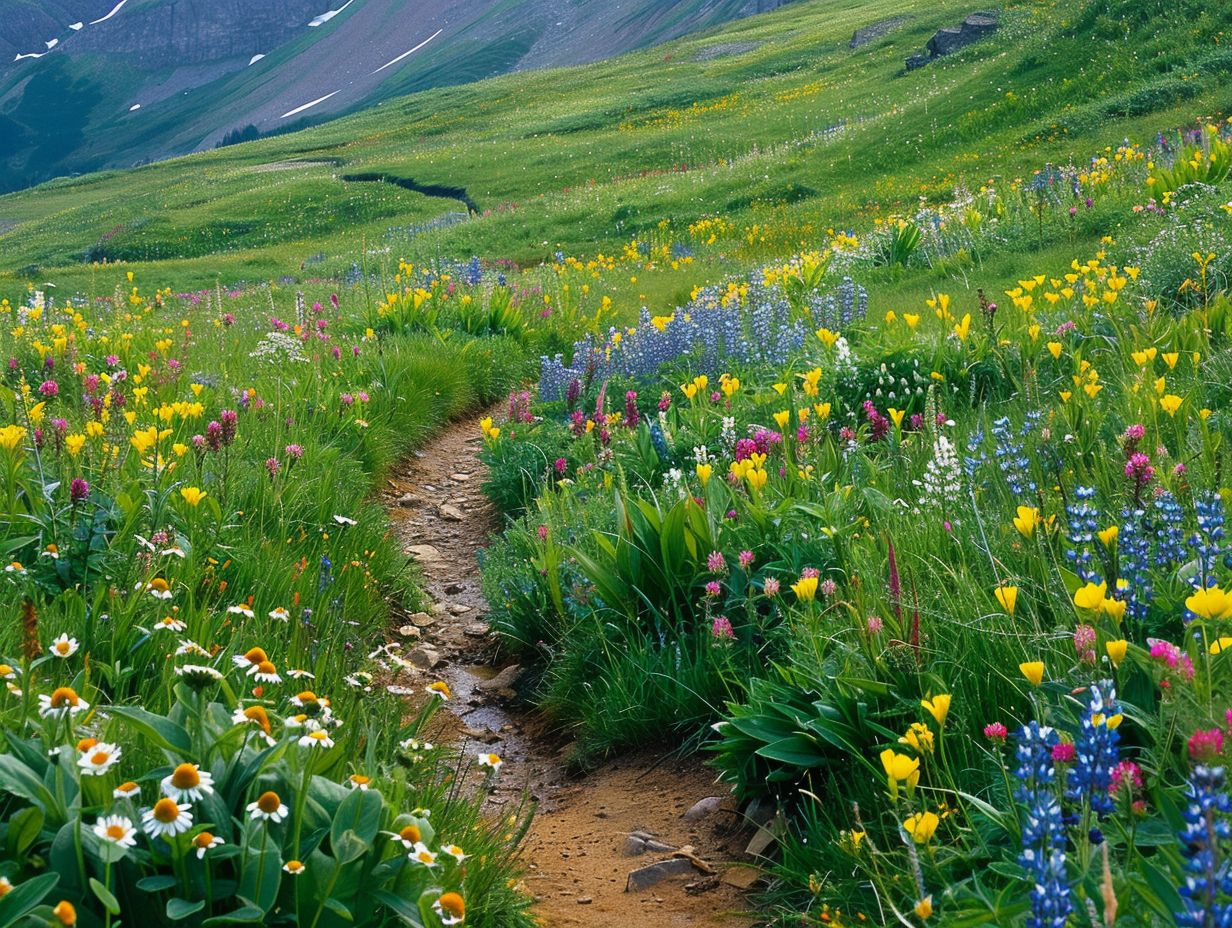
Wildflower Walks The Best Trails For Nature Lovers
Are you a nature lover looking to embark on a wildflower walk? Explore the best trails for wildflower walks, including [Trail Name 1], [Trail Name




